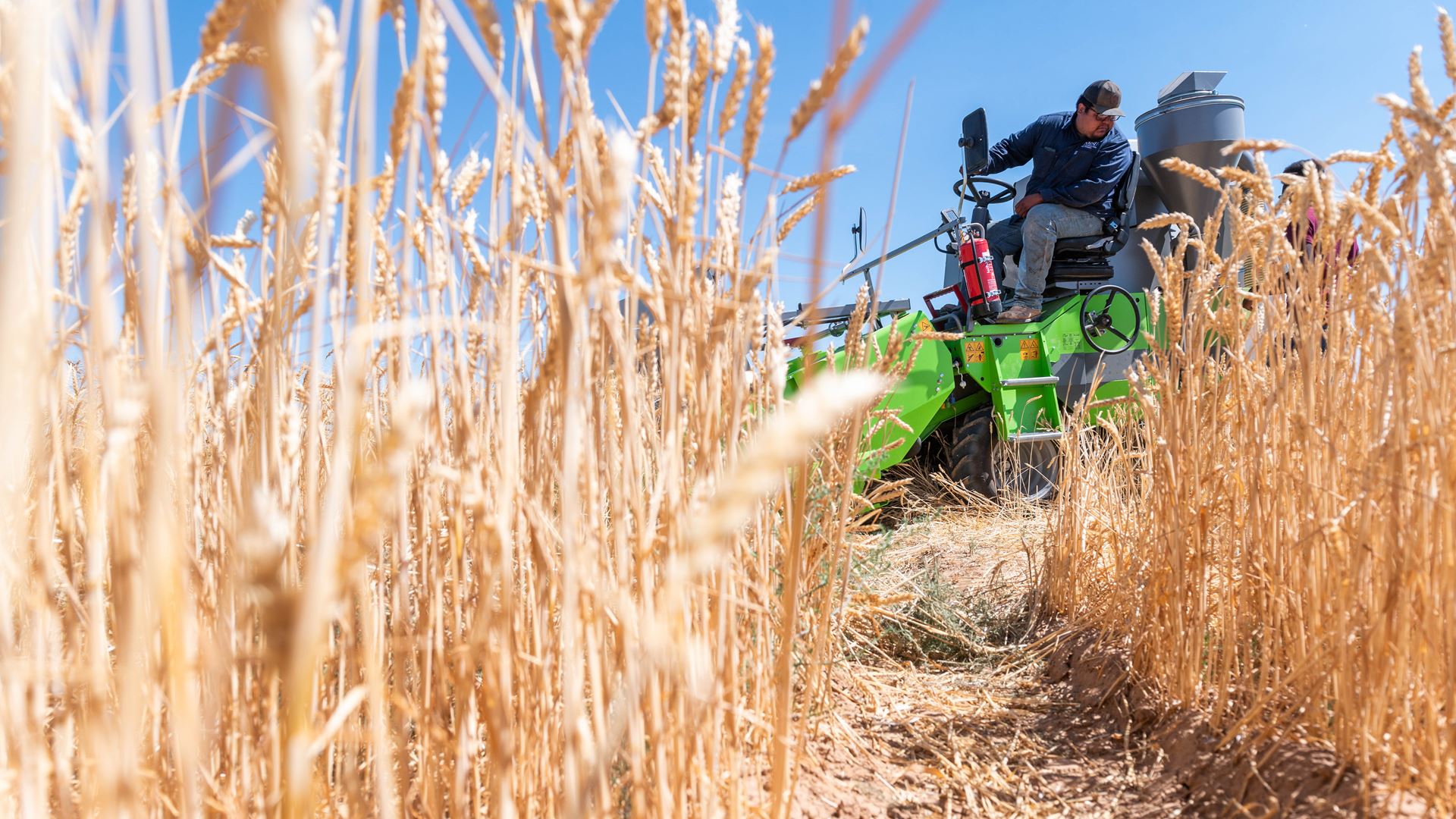About 400 miles north of Las Cruces sits a science center that plays a vital role in research for NMSU.
The Agricultural Science Center at Farmington operates on 254 acres of land leased from the Navajo Nation, which has also been an important collaborator in several of the center’s research and community projects.
It is the only center within the NMSU Agricultural Experiment Station west of the Continental Divide and the only 1862 land-grant science center to work directly on sovereign First Nations land. The center’s overall mission is to conduct research and develop educational programs that meet the needs of the San Juan County agricultural community, Navajo Nation, New Mexico and the Four Corners region. Its vision is to build agricultural resilience with innovative science that respects cultural values across the region and beyond.
“For us, the benefit of working with the Navajo Nation, and in the surrounding community, is we have the opportunity to do a lot of community-based research, and not a lot of researchers have that base,” said Kevin Lombard, the center’s research director. “We have the physical offices and faculty right there in the community, so we’re able to be responsive to community requests for assistance.”
The center supports the communities it serves through research-driven projects.
One recent project engaged Navajo elementary schools in a program designed to encourage fruit and vegetable eating among students. The project – Yéego! Healthy Eating and Gardening – involved third- and fourth-grade students from the Shiprock and Tsaile/Chinle areas who grew fruits and vegetables in school gardens and learned about healthy eating. The project collaborators, which included researchers from the University of Washington/Fred Hutchinson Cancer Research Center and Diné College in Tsaile, Arizona, then rigorously evaluated the interventions through a clinical trial process.
A larger-scale example of the center’s community engagement was its response to the 2015 Gold King Mine spill. The center’s staff acted as first responders, accessing farm fields and irrigation ditches across the Navajo Nation and Shiprock and sampling soil health for heavy metals. The center has continued long-term monitoring in collaboration with the New Mexico Environment Department and the Navajo Nation Environmental Protection Agency.
“We were able to quickly respond to that event,” Lombard said. “Our team was able to get into farmland and take samples from those areas because we were nearby and trusted in the community.”
The center also has a long history of hosting interns funded through grants from various organizations and agencies, including the United States Department of Agriculture, National Cancer Institute, National Institutes of Health, NMSU/Fred Hutchinson Cancer Center U54 Partnership for the Advancement of Cancer Research, Bridges to the Baccalaureate programs, National Indian Youth Council, Indian Resources Development and Navajo Agricultural Products Industry, among others. The center also employs many staff from the Navajo Nation.
The center’s research work focuses on projects involving cropping systems and crops such as potatoes, corn, alfalfa, small grains, fruit trees and grapes. One current project involves participating in the National Science Foundation-funded $15 million Transformation Network, a collaboration among a diversity of disciplines from more than 50 faculty and dozens of graduate students across seven universities, and led by the University of New Mexico. The project engages American Intermountain West communities to address climate change-related impacts, including drought and wildfires.
As part of the Transformation Network, the Farmington ASC is taking a leading role in the Four Corners, Three Rivers working group, supporting two graduate students and coordinating with several multi-institutional researchers working in the region.
Some of the center’s other focus areas include water conservation, economic viability of cropping systems, genetic diversity, and research and development in controlled environments. Lombard said much of this work will inform farmers of all scales.
“We do hypothesis-based research for the farmers, so that we can test these types of crop system trials, see what works well and disseminate the information to the growers, who are then able to make an informed decision,” he said. “We want our farmers to succeed. We should be doing needs-based research, so if a farmer at any scale, from 80,000 acres to a backyard garden, comes to us and asks ‘Will this crop work?’ we’ll come up with a research proposal with the ultimate goal of an objective report.”
For more information about the center, visit https://farmingtonsc.nmsu.edu.
A version of this story previously appeared in the fall 2023 issue of ACES Magazine. To read more, visit https://aces-about.nmsu.edu/resources/magazine.html.
-30-
PHOTO CAPTION: Dallen Begay, farm manager at the Agricultural Science Center at Farmington, drives a plot combine across a wheat field in July. The center houses numerous research projects involving cropping systems and crops such as potatoes, corn, alfalfa, small grains, fruit trees and grapes. (NMSU photo by Josh Bachman)
IMAGE DESCRIPTION: Man driving a plot combine in a wheat field.
PHOTO CAPTION: Bhimsen Shrestha, a graduate research assistant at the Agricultural Science Center at Farmington, takes measurements from chip and table potatoes growing in a field at the center in July. (NMSU photo by Josh Bachman)
IMAGE DESCRIPTION: Man walking among several green plants.

